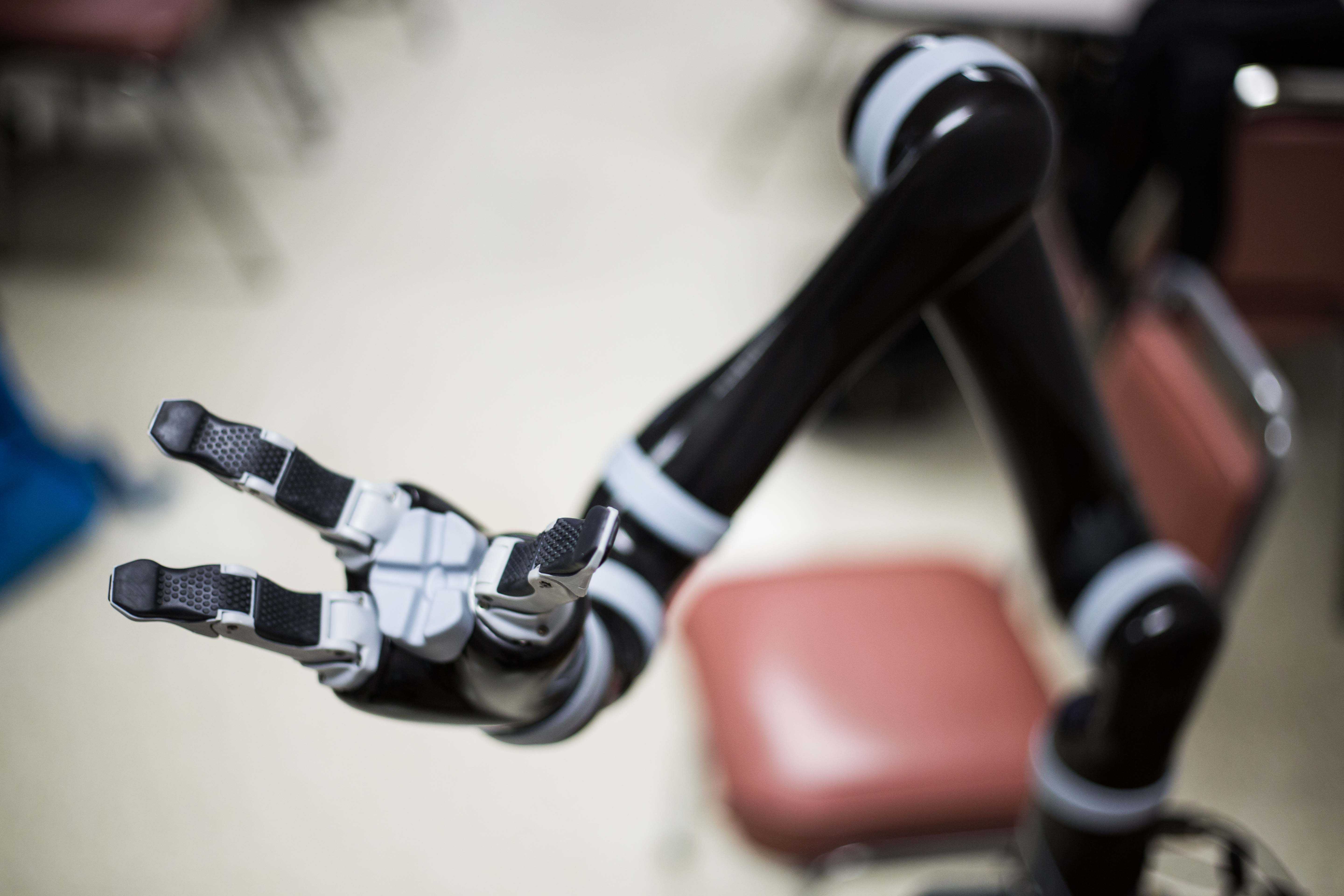After three failed attempts, an arm successfully lowered a tennis ball into a plastic cup Friday afternoon. This might not seem difficult to do but it may be more impressive considering the arm is robotic and programmed by Cal State Long Beach students.
The robotic arm, named Jaco2, is part of the Human Performance and Robotics Laboratory. The lab consists of 12 students from different departments within the College of Engineering.
Emel Demircan, an assistant professor in the Mechanical and Aerospace Engineering Department, opened the lab during the fall 2015 semester. Demircan saw an opportunity for interdisciplinary research between the College of Engineering’s various departments.
“We are a synthesis of biomechanics and robotics,” Demircan said. “We have tools from both sides, we have algorithms from both sides, and we synthesize these two fields for applications like ergonomics, physical therapy and rehabilitation.”
Aman Mehta, a sophomore computer science major, said Jaco2 is meant as an assistance device for people with disabilities. Jaco2 is manufactured by Kinova Robotics with motion software written by lab students. The software they’re writing will make the arm more automated.
“[Kinova] built the arm with the joystick so that people who are disabled can move it and get through daily tasks that we take for granted so easily but many are not able to do,” Mehta said. “We’re trying to improve upon it and add more features.”
Mehta said one small goal for the semester is programming the arm to do basic commands so lab students gain a better feel for it. After that, they will attach sensors onto the arm to detect when it touches an object. In the long term, they’ll incorporate voice command capabilities.
“For example, if I were to say, ‘pick up the laptop,’ it will be able to use a sensor and see that there’s a laptop there, understand that and pick up the laptop,” Mehta said.
Students in the lab also have access to a motion-capture system. After outfitting themselves or other human subjects with button sensors on various limbs, students can analyze movement and muscle activity.
Senior mechanical engineering major Jared Chafetz uses motion capture in his research on effective rehabilitation methods for knee pain due to a knee pain problem of his own.
“…My doctors basically don’t know why, and they got nothing,” Chafetz said. “I’m testing my own theories: ‘Will this work? Will this work?’ And instead of saying, ‘Oh, I hope it does,’ I can say, ‘No, I can prove this.’”
Freshmen computer science major Keaton Nishimi uses motion-capture technology to understand the biomechanics of inclined running. Nishimi, who ran cross country in high school, hopes to find the optimal way for athletes to run uphill.
“I was always interested in the science side of things and how that works because, to me, that always helped me understand what I needed to do to get better at running,” Nishimi said.
A touch sensory technology called a haptic device is also available. The device mimics the feel and resistance of surfaces in virtual environments. Haptic technology is often found in rumble packs in video game controllers. According to Demircan, the lab’s haptic device has medical applications.
“You can use these devices for creating a rehabilitation mechanism,” Demircan said. “While a [patient] is interacting with the virtual environment we can apply external forces and external disturbances so we can try to correct the motions or the posture of the person.”
The robotics lab also gives students a chance to help each other with the politics and paperwork of research. Students assist each other with proposal writing and applications to CSULB’s Internal Review Board that approves research using human subjects.
Demircan has two proposals for the National Science Foundation and the National Institute of Health to be submitted today. Nishimi and Chafetz are waiting on review board approval for their research in one to two weeks, Demircan said.
Meetings are held Fridays from 11 a.m. to 1 p.m. in Engineering and Computer Sciences Room 115.




